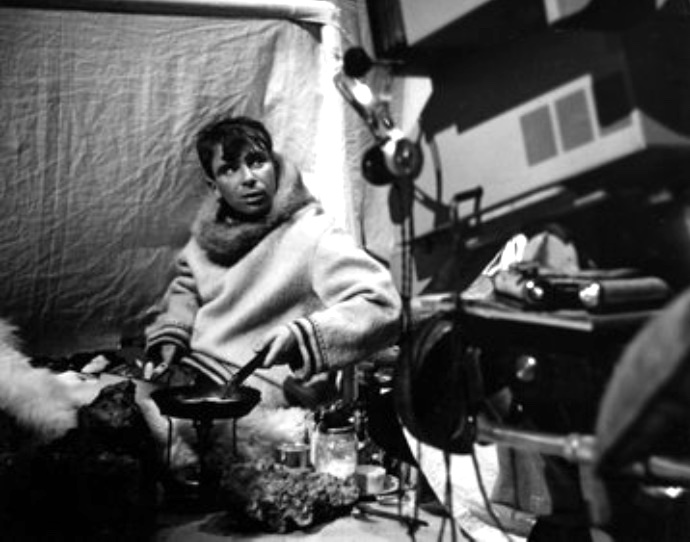OTD in early British television: 25 May 1938

John Wyver writes: At the heart of the evening schedule on Wednesday 25 May 1938 was a 25-minute talk by Reynold Bray illustrating the conditions in which he lived for two summers in Arctic Canada. As can be seen above, a replica of 2-metre long tent was set up in the studio and Bray sat in his fur coat surrounded by his stove and the stuffed birds he was there to collect. He was assisted in this by Patrick Baird, who had accompanied him on various expeditions.
An obituary in Nature in March 1939 noted that Bray was ‘an Arctic explorer of considerable achievement and much promise.’ But it continued with an explanation of events soon after this broadcast
In 1938, Bray planned with P[atrick] Baird to continue his exploration of the western coast and the interior of Baffin Island. Ice, however, interfered with the ship’s progress and eventually the two men were landed on the south-east of Melville peninsula, whence they set off in their boat last August in an attempt to reach Igloolik Island, 300 miles to the north at the eastern entrance to Fury and Hecla Strait. Some forty miles south of the island, on September 14 last year, Bray was blown out to sea in a canvas boat and lost.
I have just finished reading Alison Griffiths’ immensely rich new study Nomadic Cinema: A Cultural Geography of the Expedition Film which looks in fascinating detail at expedition films made between 1890 and 1930, ‘the so-called golden age of “great expeditions’, a period of unprecedented global mobility shaped by colonialism, racial capitalism, and modernity.’
Many of these films were made for specialist use in museums or for showings at meetings of professionbal societies, and so were not available or suitable for broadcast. Those produced for commercial exploitation were prevented for being screened by the protective policies of the cinema distributors and exhibitors.
Early television, therefore, was restricted to modest talks such as Bray’s, of which a number were produced from AP, although nothing with quite as intimate a setting. Much like the expedition films considered by Alison Griffiths, these presentations legitimated directly or indirectly imperial attitudes and actions — but that’s the subject for a more substantial article.
Some of the talks were illustrated with film extracts supplied by the subjects, including the five men featured in the programme Quid Abeamus? in May 1938, which asked ‘What is it that makes men go on expeditions?’: Tom Longstaff, Michael Spender, Tom Harrisson, Robert Giddings (who made several appearances on pre-war television, as did Harrisson) and Hans-Peter Smolka. Smolka, incidentally, was a Soviet spy and a fascinating character; his story is told by Peter Foges here.
Explorers were also celebrated on Picture Page, as was the American Dwight Long in December 1937 at the conclusion of his five-year-long trip around the world by sailing boat; here’s a short newsreel item from that moment of him being welcomed at Ramsgate [and if the clip is not showing, go here].
[OTD post no. 159]
Leave a Reply